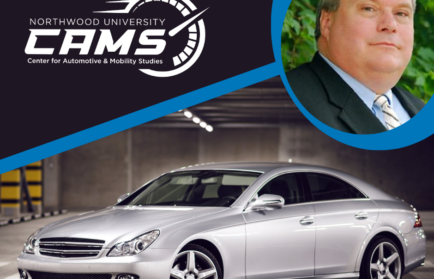One way The Northwood Idea remains vibrant is by examining it in contrast to a variety of divergent philosophies. Where We Stand presents the viewpoint of a respected author on a given topic, alongside the perspective of a supporter of The Northwood Idea. It provides an opportunity to understand how our views differ from those of others, and why it is so vital that we continue to stand steadfast in the defense of liberty. In this edition, Susan Mudd of the Environmental Law & Policy Center proposes a series of government programs and policies designed to accelerate the transition to vehicles powered by electricity. Northwood’s Elgie Bright, on the other hand, advocates for a market-based approach.
Memo from the Midwest: What the Biden administration should prioritize for a robust transition to electric vehicles
Susan Mudd is an attorney and senior policy advocate for the Environmental Law & Policy Center, where she directs ELPC’s Diesel Pollution Reduction Initiative to protect children’s and community health, ELPC’s Electric School bus campaign and with ELPC’s Science Advisory Council. Her essay was first published March 3, 2021, on the ELPC’s website.
ELPC looks forward to working with federal partners to reduce carbon pollution by revving up clean electric vehicle efforts
President Biden has already announced with much fanfare that electric vehicles and a nationwide EV charging network are of paramount importance to addressing the climate change crisis. More than one executive order signed during his first week in office included specifics about EVs, including creating jobs to build EVs domestically, electrifying federal fleets, and establishing a network of 500,000 charging stations across the country so EV drivers can reliably reach their destinations. Transportation Secretary Pete Buttigieg has echoed the president’s commitment to make vehicle electrification a key component to reducing greenhouse gas emissions in the transportation sector.
The Environmental Law & Policy Center has been working to advance transportation electrification at the municipal, state, and regional levels in the Midwest and we welcome President Biden’s commitments and the “whole of government” approach to tackling the climate crisis. Now we look forward to revving up those efforts with federal partners that refreshingly share ELPC’s goal of reducing carbon emissions from the transportation sector, which is now the leading source of U.S. climate pollution. The U.S. can slash emissions by accelerating steps to get more pollution-free vehicles on the roads, and strengthening and expanding the public transit and high-speed rail infrastructure and investing in safe walking and biking so there are more efficient and equitable alternatives to driving. Moreover, electrifying the transportation sector will provide critical reductions in air pollution in the Midwest and across the country.
Here’s what the Biden administration can and should do on the EV front:
Support and promote funding for a massive shift to electric school buses
We can get dirty diesel school buses off the roads and eliminate 25 million children’s ongoing exposure to those harmful emissions by expanding electric school bus rollout nationwide. A comprehensive climate bill introduced in the U.S. House of Representatives in early March 2021 included a provision led by Rep. Jahana Hayes (D-CT) and Rep. Tony Cardenas (D-CA) authorizing a $25 billion investment to rapidly transition close to half the school bus fleet in the U.S. to clean, electric buses. The bill would target grants to school districts serving communities with unhealthy air pollution and lower-income residents. ELPC is part of the national Electric School Bus Coalition, which supports the bill. President Biden should do all he can to push that legislation over the finish line.
Ensure more Americans can afford EVs
The Biden administration should support efforts to get more people to buy EVs by urging Congress to increase financial incentives to make them more affordable, especially compared to cars with internal combustion engines. Until now, the federal tax credit for EVs has been up to $7,500 and only has applied to the first 200,000 cars per manufacturer. The Biden administration also should support swapping out the tax credit for a cash rebate that’s available at point of purchase so consumers realize that benefit immediately. Rebates should be extended to anyone buying a used EV. Additionally, the 200,000 car limit for the tax credit penalizes successful auto manufacturers and hurts sales – that limit should be eliminated if there’s a true commitment to shift to EVs.
Act quickly to create a 500,000-plus EV charging network nationwide
A nationwide charging network is critical for our federal highways to reduce range anxiety for drivers, so they can reliably get from point A to B. While home charging will meet most daily travel needs, we still must build out the charging network on our highways for passenger cars as well as for medium and heavy-duty vehicles. Additionally, all federal buildings with parking should be required to install publicly accessible electric vehicle supply equipment so adding charging stations will be easier.
Transition the federal fleet to EVs, offer subsidies to states, and buy EVs made in the USA
President Biden said he would electrify the federal fleet, which consists of about 650,000 vehicles across all government departments. That would make a sizable dent in reducing emissions, as those vehicles traveled 4.5 billion miles in 2019, according to the General Services Administration. The federal government’s hefty purchasing power can foster significant demand for EVs that will create manufacturing jobs and help drive down costs.
The president should act on that initiative quickly and consider offering subsidies to state governments willing to similarly convert state fleets. What’s more, federal and state governments should buy EVs made in the USA boosting American auto production and benefiting the domestic workforce and the economy.
President Biden’s EV agenda may, in part, be helping to push the auto industry to step up. In recent weeks car manufacturers have announced plans for significant changes in their automotive production lines. General Motors CEO Mary Barra said the automaker aspires to make only pollution-free vehicles by 2035 and has committed to spend $27 billion on electric and autonomous vehicles through 2025. Ford said it will spend $11 billion introducing a roster of new EVs, including the Mustang Mach-E and an electric version of its uber popular F-150 pickup truck.
In addition, there are other opportunities for the administration to accelerate electrification while also improving air quality and protecting public health. ELPC has been engaged in the following areas where we encourage greater participation from the Biden administration:
Reprioritize Diesel Emissions Reduction Act (DERA) funding
Diesel Emissions Reduction Act (DERA) funding for medium and heavy-duty vehicles and equipment can accelerate the retirement of legacy versions and towards replacements with zero-emission models. The current process overwhelmingly funds overhauls of existing diesel trucks and equipment (with better filters, for example) to emit less of the harmful pollutant or buy “cleaner” diesel models. As electric versions of truck and equipment enter the market daily, it’s time to help that transition.
Require clean construction for federally-funded projects
Federally-funded projects using construction equipment should require electric equipment that emit no GHGs, whenever possible. Federal dollars should only go towards projects allocated to Tier 4 diesel equipment that emit less carbon dioxide, nitrous oxide and small particulate matter than standard off-road diesel equipment. Also, to protect worker and community health, the government should impose idling limits on diesel equipment used on those projects.
There’s much work to be done, and the Biden administration has loudly stated that its EV policies will help the U.S. reduce climate pollution – and they will also help clean the air we breathe. ELPC looks forward to helping the federal government navigate that greener cleaner road to a net-zero future.
Electric vehicles are a great idea, but government intrusion will only make the journey there a bumpy one
Elgie Bright is an associate professor at Northwood University and chairs the Department of Automotive Marketing and Management.
History tells us that the free-enterprise system is the best way to set the course for a prosperous future
In 1903, Henry Ford produced the first Model A automobile inside a repurposed wagon shop on the east side of Detroit, completing just a few vehicles per day. Within 10 years, at a new plant just a few miles away, his company introduced the world to the moving assembly line, churning out more than 200,000 Model T’s per year and revolutionizing both the way humans would get from one place to another and the way they would build things.
How much government investment do you think went into either of those facilities?
You guessed it. Zero.
The human condition was transformed by an entrepreneur who believed in his dream and was willing to invest his time, talent, and capital in making it a reality.
The result was, of course, historic. One of the most productive industries of all time grew from the humble beginnings of Ford and a handful of other innovators. It is also worth noting that the United States dominated that industry for some time, and while other countries have scratched and clawed their way toward competitive parity, the U.S. has always been at or near the top of the list of leading automotive producers.
Looking at the road ahead is not a simple task
The future of the auto industry, everyone seems to agree, is electric.
So, it is concerning to see that commentators such as Susan Mudd of the Environmental Law & Policy Center (see adjacent essay) are proposing a laundry list of government actions intended to push the U.S. auto industry toward all-electric drivetrains.
If electric vehicles make sense, the U.S. auto industry doesn’t need to be pushed.
History teaches us that the free-enterprise system is the best way to judge the wisdom of any investment. Private investors know better than any government when and how to move into new markets. Perhaps just as importantly, investors know when NOT to move. People who are investing their own capital have good reason to be sure it is a wise investment.
When government, on the other hand, throws money at something, the people doing so don’t have to be quite so concerned about the wisdom of the investment, because it’s not their money. It’s our money. Actually, it’s your money.
If electric vehicles – and the infrastructure that supports them – truly are the next big thing, you can believe that investors will fund the transition. In fact, they already are. But just as was the case with internal-combustion automobiles, the outcome will be best if we let the free-enterprise system work.
Patience is more than a virtue, it’s a necessity
In the case of Henry Ford, the process of revolutionizing human progress was not as smooth as you might assume. In fact, we have all heard of the Ford Motor Company in large part because Henry’s first attempt to sell vehicles, the Detroit Automobile Company, failed. The DAC used traditional assembly methods, which couldn’t produce vehicles fast enough to make it profitable. With little of his own funds left, Henry had to start over with the backing of new investors, and they insisted on more than just a promise that he had a great idea.
It is interesting to note who those initial investors were. John and Horace Dodge were among them. Detroit coal dealer Alexander Y. Malcomson was another. There were a few local merchants, a few lawyers, a banker, and even a company clerk who, presumably, got wind of the ground-floor investment opportunity and was smart enough not to pass it up.
It is reasonable to speculate that the need to convince investors to back him was a primary reason that Ford devised the assembly line.
One thing we know for sure is that Ford’s enterprise succeeded. The company was profitable within its first year and started paying shareholder dividends four months after being incorporated. Within two years, the investors had all tripled their money. Some profits were reinvested into the company, including the plant that was so successful at making Model T’s. The government didn’t have anything to do with any of it until the time came for Ford to pay taxes on his profits.
Don’t fix a system that works perfectly
In 2019, about 727,000 electric vehicles were sold in the United States, according to the U.S. Department of Energy. About half of those were electric-only drivetrains, and the other half were plug-in hybrids. That is a small number compared to the 17 million total of new light-duty vehicles sold, but the percentage rises each year.
Clearly, the industry is moving toward all-electric propulsion. General Motors has announced plans to stop making internal combustion engines by the year 2035. Investment and innovation are pouring into the technologies that will decide which companies thrive and which companies flounder in the years ahead. It is a natural part of the free-enterprise system, and we will all be best off if we let that system work without manipulation by government.







